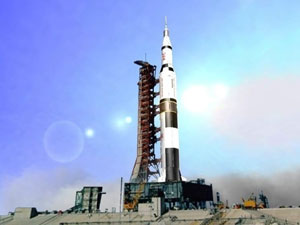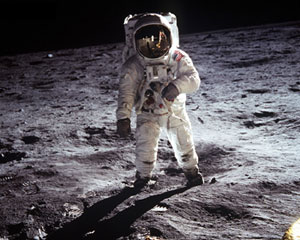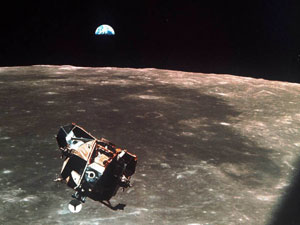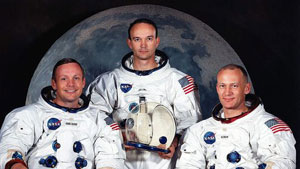Human Space Flight

Human spaceflight (or manned spaceflight or crewed spaceflight) is space travel with humans aboard spacecraft. When a spacecraft is manned, it can be piloted directly, as opposed to machine or robotic space probes controlled remotely by humans or through automatic methods on board the spacecraft.
Currently, only Russia and the People's Republic of China maintain human spaceflight capability independent of international cooperation. As of 2013, human spaceflights are only launched by the Soyuz program conducted by the Russian Federal Space Agency and the Shenzhou program conducted by the China National Space Administration. The United States lost human spaceflight launch capability upon retirement of the space shuttle in 2011. (Source: image and text wikipedia)
Moon Landing

A moon landing is the arrival of a spacecraft on the surface of the Moon. This includes both manned and unmanned (robotic) missions. The first human-made object to reach the surface of the Moon was the Soviet Union's Luna 2 mission, on 13 September 1959.
The United States' Apollo 11 was the first manned mission to land on the Moon, on 20 July 1969. There have been six manned U.S. landings (between 1969 and 1972) and numerous unmanned landings, though no soft landings have occurred since 1976.
A total of twelve men have landed on the Moon. This was accomplished with two US pilot-astronauts flying a Lunar Module on each of six NASA missions across a 41-month time span starting on 20 July 1969 UTC, with Neil Armstrong and Buzz Aldrin on Apollo 11, and ending on 14 December 1972 UTC with Gene Cernan and Jack Schmitt on Apollo 17. Cernan was the last to step off the lunar surface.
All Apollo lunar missions had a third crew member who remained on board the Command Module. The last three missions had a rover for increased mobility.


(Source: text and images wikipedia)
Copyright Timelines Webdesign 2013 - 2020




